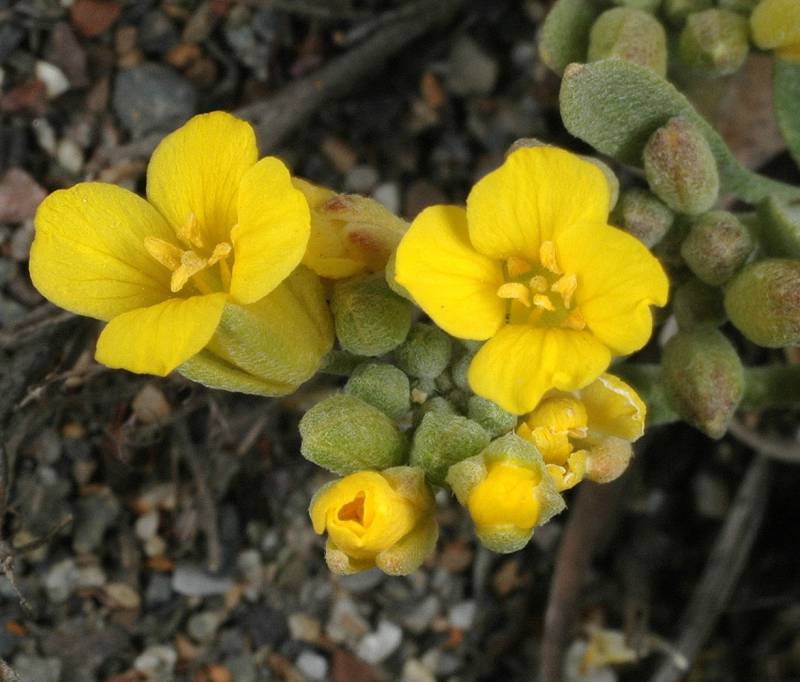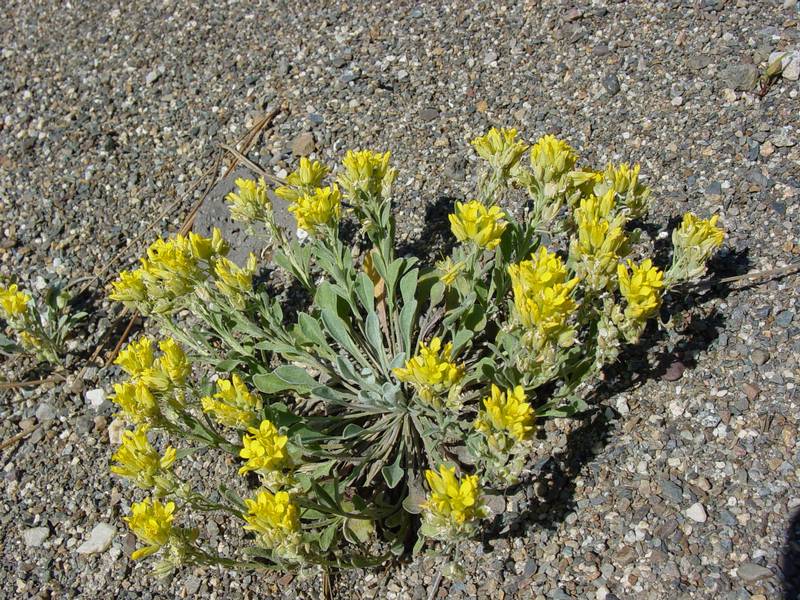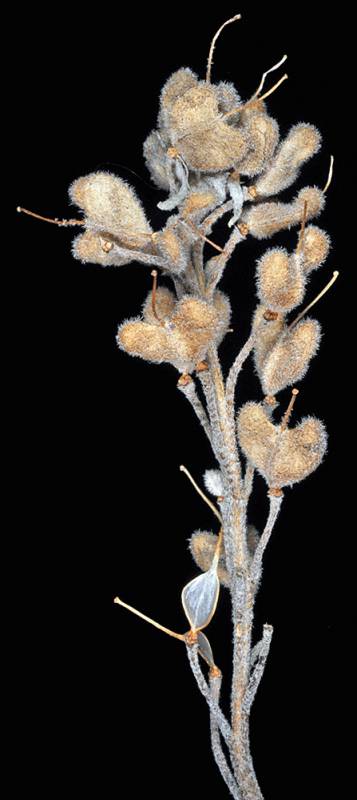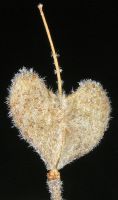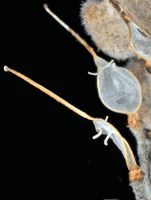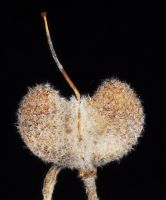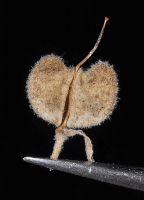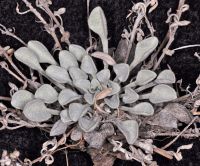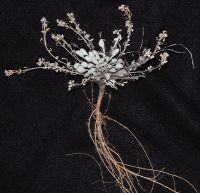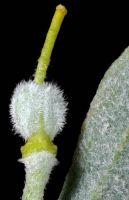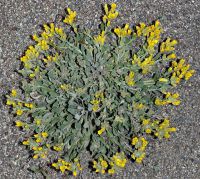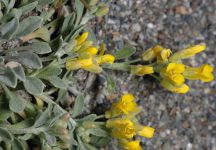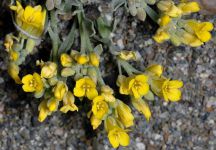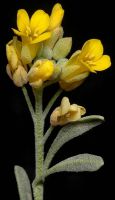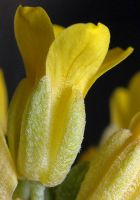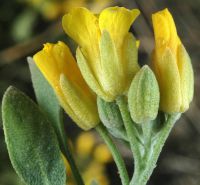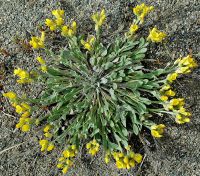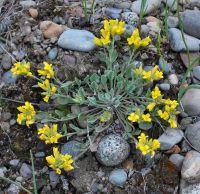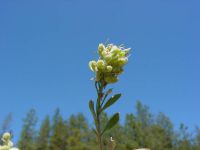Distribution: Occurring east of the Cascades crest in eastern Washington; eastern Washington to eastern Oregon, east to Idaho and Montana.
Habitat: Gravelly stream banks and hillsides.
Flowers: May-July
Origin: Native
Growth Duration: Perennial
Conservation Status: Not of concern
Pollination: Bees, flies
Gray-stellate perennial herb from a branched crown, the many, simple stems erect to decumbent, 1-2 dm. tall.
Basal leaves 3-6 cm. long, the blades entire, obovate to nearly round, narrowed abruptly to broad petioles 2-3 times as long; cauline leaves alternate, several, much reduced, oblanceolate.
Inflorescence of many-flowered, elongate, bractless racemes; pedicles 6-20 mm. long, ascending to reflexed, somewhat S-shaped; sepals 4, purplish, stellate, the outer pair slightly saccate at the base; petals 4, yellow, spatulate, 5-11 mm. long; stamens 6; style 4-7 mm. long.
Silicles strongly inflated, obcompressed, obtuse to truncate at the base, 5-7 mm. long and slightly wider, with a broad, open, apical sinus about 2 mm. deep.
Publication: Gen. Amer. Bor. 1: 162. 1848.
Lesquerella geyeri (Hook.) G.A. Mulligan
Vesicaria geyeri Hook.
-
ssp. geyeri – double bladderpod, Geyer's twinpod bladderpod, Geyer's twinpod
 Occurring east of the Cascades crest in eastern Washington; eastern Washington to eastern Oregon, also in Montana.
Occurring east of the Cascades crest in eastern Washington; eastern Washington to eastern Oregon, also in Montana.
PNW Herbaria: Specimen records of Physaria geyeri in the Consortium of Pacific Northwest Herbaria database
WA Flora Checklist: Physaria geyeri checklist entry
OregonFlora: Physaria geyeri information
E-Flora BC: Physaria geyeri atlas page
CalPhotos: Physaria geyeri photos

